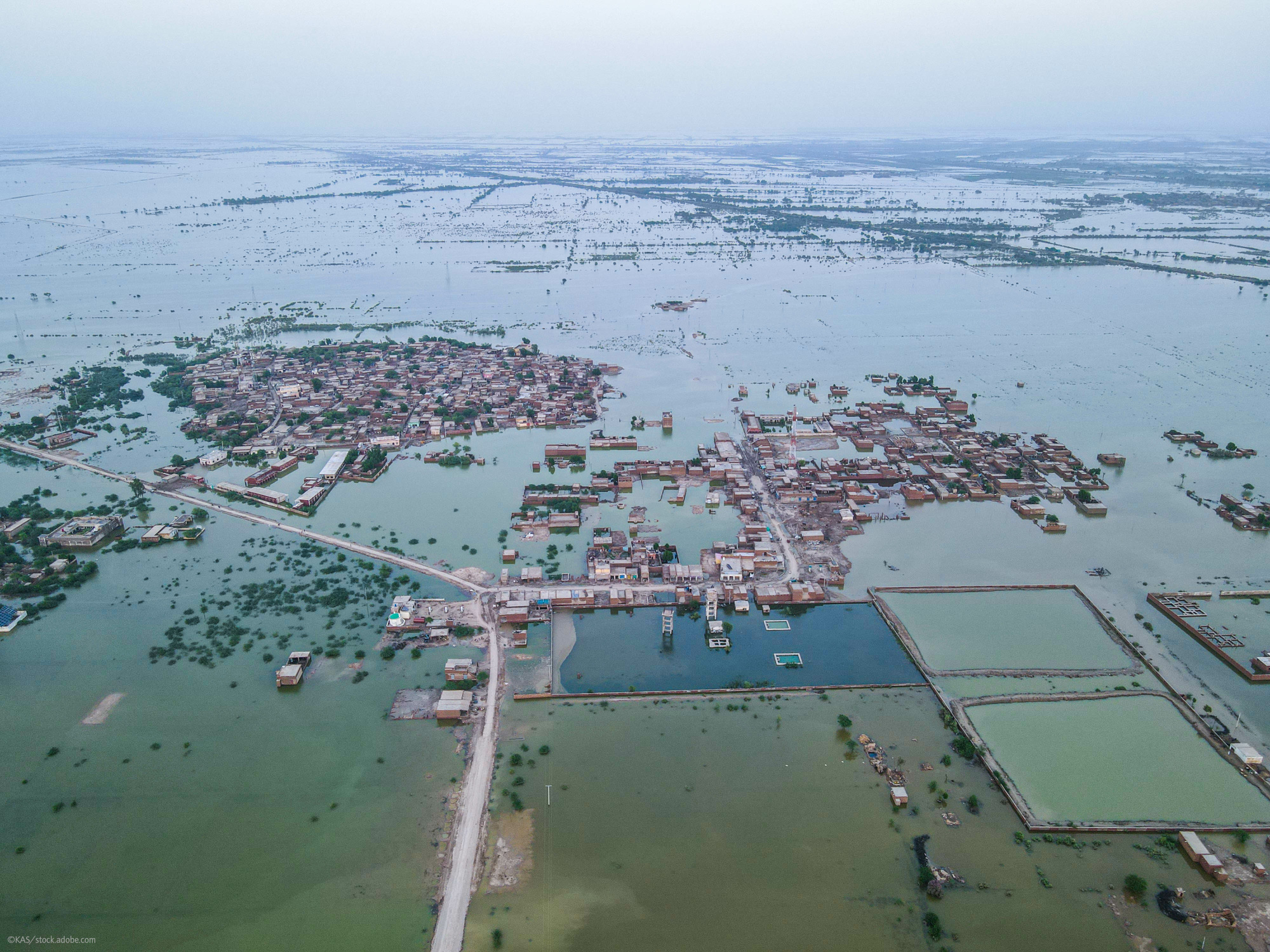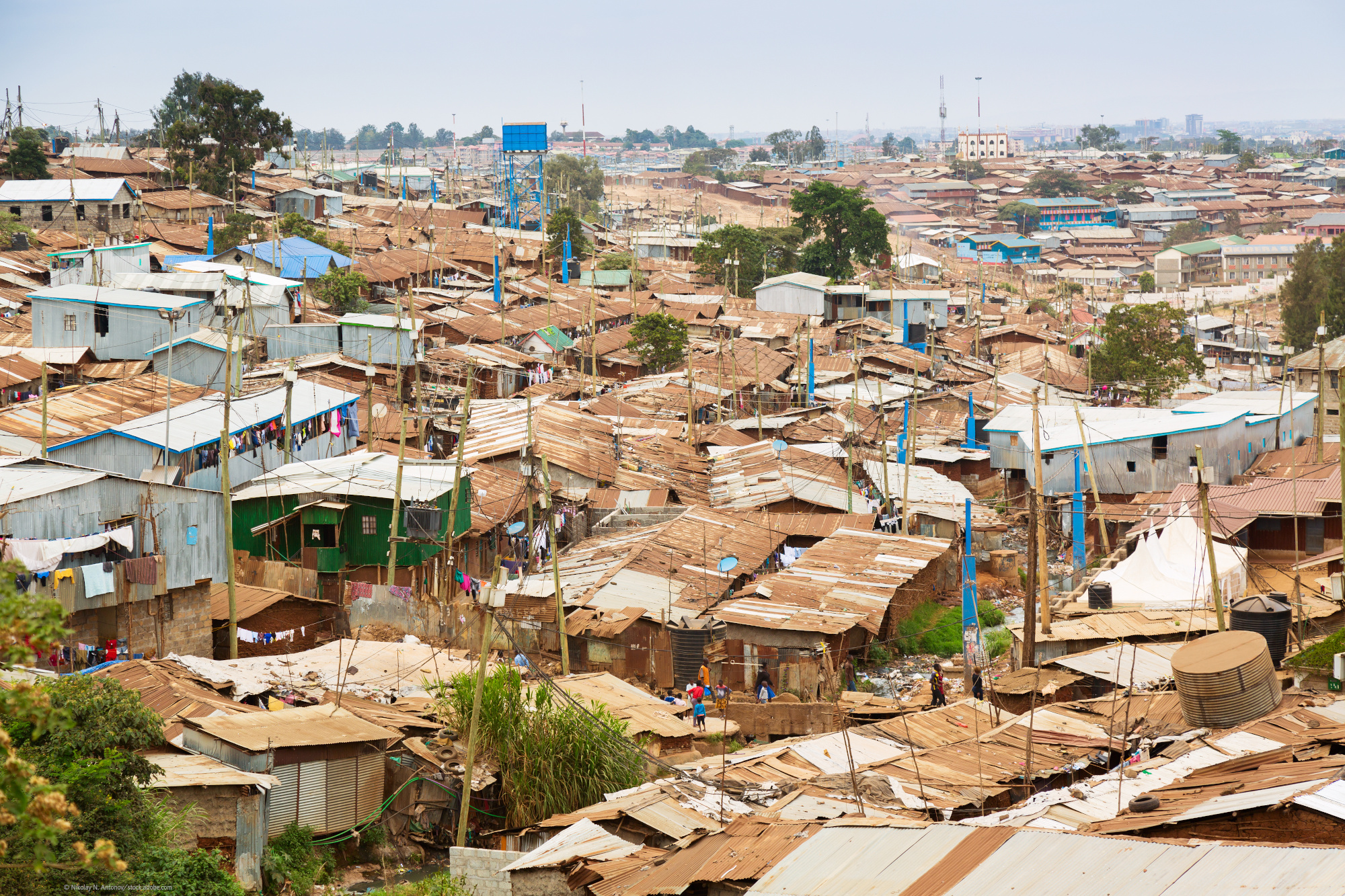Due to the advancing climate crisis, natural disasters are increasing, rising sea levels and desertification are making numerous places uninhabitable now and in the future. The local people either have to adapt to radically changed living conditions or flee. Hans-Joachim Preuß worked at home and abroad for GTZ, GIZ and Welthungerhilfe. In the following article he explains the special challenges of climate migration and how to combat its causes.
Natural disasters such as floods, storms and droughts or armed conflicts, just as suddenly as they occur, cause people to temporarily or permanently flee to unaffected regions or other countries.
The triggers of such migration movements are easy to explain and understand. The consequences can be effectively countered with professional humanitarian aid and reconstruction measures.
The situation is completely different with gradual and non-linear deterioration in living conditions that can be attributed to effects of climate change such as desertification, the extent and regularity of precipitation or sea level rise. It is difficult to derive a direct connection between climatic parameters and leaving one's homeland. On the one hand, these phenomena represent only part of a complex set of causes for the individual decision to leave. On the other hand, the affected population groups react to the deterioration of their environment with a variety of adjustments before fleeing or migrating is chosen as a way out.
Development and migration policy in industrialized, emerging and developing countries are therefore not only faced with the challenge of recording and forecasting the extent and direction of climate-related migration movements, but also with the question of which instruments and measures can be used to counteract environmental or climate flight. This does not affect the demand on industrialized countries to do everything possible to reduce greenhouse gases.
In recent years, the highest temperatures since meteorological records began have been recorded worldwide. The world's oceans store 90 percent of the heat. Together with the melting of polar ice and glaciers, this has led to sea level rise of 4.5 millimeters per year since 2013, much faster than a quarter of a century ago.
The entry of carbon dioxide has increased the acidification of the oceans and at the same time reduced their absorption capacity for this greenhouse gas. Despite the coronavirus pandemic, which reduced global carbon dioxide emissions due to the decline in global mobility and industrial production, overall atmospheric pollution was not reduced, especially as emissions of methane and nitrous oxide continued to increase.
The developments described are likely to result in a faster and greater increase in global warming of more than 1.5 degrees Celsius by 2030; This threshold, agreed by 195 states in 2015, will be significantly exceeded in the next few years.
Tip: You can read about the consequences of global warming of 3 degrees in “An Earth as we don’t (want to) know it” by Stefan Rahmstorf.
At the UN Environmental Conference in Stockholm in June 2022, it was admitted that measures against climate change and environmental destruction are not being pushed forward quickly and energetically enough. An appeal was made to the governments of the world for urgent and, if possible, collective implementation of decisions that had already been made. An agreement on further regulations was left to subsequent meetings. The drama of this development was hardly noticed by the public absorbed by the war in Ukraine.
It can be predicted with high probability that the effects of climate change on people and nature, which go beyond natural fluctuations, will become even more noticeable in the coming years. These effects include more frequent extreme weather events, rising sea levels, absent or more irregular rainfall, and higher air and ground temperatures.
 |
| Fig. 1: Flood disaster in Pakistan 2022 |
Even if the number of tropical storms has not increased overall according to recent studies, the proportion of storms in the highest categories has increased significantly, causing material and personnel damage to increase and the resilience of many local population groups, which has been tried and tested for generations, to be overwhelmed. Rising sea levels will not immediately flood Pacific islands and coastal cities and regions, but the interaction of wind and water will flood parts of human settlements more frequently and make them uninhabitable. Lower-lying agricultural land is no longer suitable for the production of food and export goods due to erosion and salinization. A lack of rain causes pastures to become deserted and fields to wither; Irregular and heavy rainfall leads to erosion of fertile soil, leaving barren land. Drinking water becomes scarce or undrinkable with fatal consequences for health. Heat waves increase stress for people, animals and plants; their productivity suffers as a result. Hunger and food insecurity follow quickly. The pressure on the people affected to react to these developments is increasing.
The described consequences of climate change are unevenly distributed socially, sectorally and regionally. The biggest losers include poor people whose resilience to external shocks is weak, who work in agriculture and live on its income, and who live in regions of the world whose natural environments are sensitive to environmental changes. Such population groups are generally not among those for whom cross-border migration is even an option. As a rule, they cannot raise the necessary material and financial resources that the migration of a large family over long distances requires. Their knowledge and skills are often not sufficient to open up economic prospects in a foreign context. In this respect, the only choice they have is between ruin and adaptation. Younger and better-educated family members migrate temporarily or cyclically to urban zones in their country or to regions near the borders of neighboring countries, often made easier by the fact that relatives or members of the same ethnic origin already live there.
Possible adaptation responses include new cultivation methods (e.g. switching from rain-fed farming to artificial irrigation), adapted varieties such as drought- and salt-resistant plants, heat-tolerant animal species, and ameliorations (dams, bunds) to prevent wind and water erosion. Structural changes to homes and shared infrastructures increase their resistance to environmental influences.
If possible, additional and different sources of income such as processing agricultural products or wage labor are sought. However, these strategies can only be implemented with a minimum amount of capital, so that the departure of at least some members of the family is necessary for survival simply because of the expected transfers from migrants to those left behind. Their number has risen steadily in recent years.
The World Bank assumes that around 150 million people will be internally displaced due to climate-related environmental changes by 2050, more than half of which will be on the African continent alone. At the end of 2021, their number had already reached a new high of almost 60 million, with the main reason for displacement being armed conflicts; As a reason for displacement, these are currently still ahead of the causes of flight caused by climate change.
The target regions to which displaced people flee are also affected by the refugee movements. Cities must prepare for a growing influx of migrants. Accommodating and caring for the additional people requires a financial framework that goes beyond the budgets of poorer countries. Immiseration in urban slums and distribution conflicts can be the result, which affects the quality of life of established urban middle-class groups so much that they feel compelled to leave their country due to better educational conditions and sufficient material resources.
 |
| Fig. 2: Slum in Nairobi, Kenya |
The carrying capacity of areas less affected by the effects of climate change is also being strained by population growth, meaning that conflicts between immigrants and traditional populations over natural resources such as arable land, pastures and water are increasing. There is also a growing risk that the overexploitation of existing natural resources will increase and their vulnerability to external influences will further increase. Furthermore, slash-and-burn agriculture and the loss of carbon sinks can further promote climate change.
Climate change is accelerating and intensifying the deterioration of living and production conditions, particularly for poorer population groups in rural regions of developing countries. Their ability to adapt is limited, which is forcing an ever-increasing proportion of them to migrate, especially to cities and neighboring regions. The respective governments are usually neither in a position to support those affected nor can they raise the necessary funds to preserve their habitats.
There is a need for action at different levels: the avoidance of climate-damaging emissions in industrialized and emerging countries is necessary; However, it only leads to a long-term reduction in negative environmental effects in fragile regions of developing countries. In the short and medium term, adaptation measures have priority there. These range from social and employment programs to the sustainable diversification of income opportunities.
There is also a need for support in the development of climate-resilient infrastructures for flood protection and water supply, and the introduction of new production processes, plant varieties and animal species. In order to contain distribution conflicts and reduce ecological damage, integrated urban and regional development programs are necessary that take locals and newcomers equally into account. Suitable neighboring countries should be enabled to accept migrants.
The growing number of environmental refugees, who are fleeing primarily to cities and regions less affected by climate change, deserves greater attention. They rarely reach Europe or other industrialized countries and are therefore hardly noticed by the public, the media and politicians. But it would be negligent not to specifically address the problem of internal refugees in developing and emerging countries. Failure to act fuels existing conflicts and promotes environmental destruction in fragile regions.
Previous successes in national and international development policy must not be jeopardized but rather must be consolidated.


